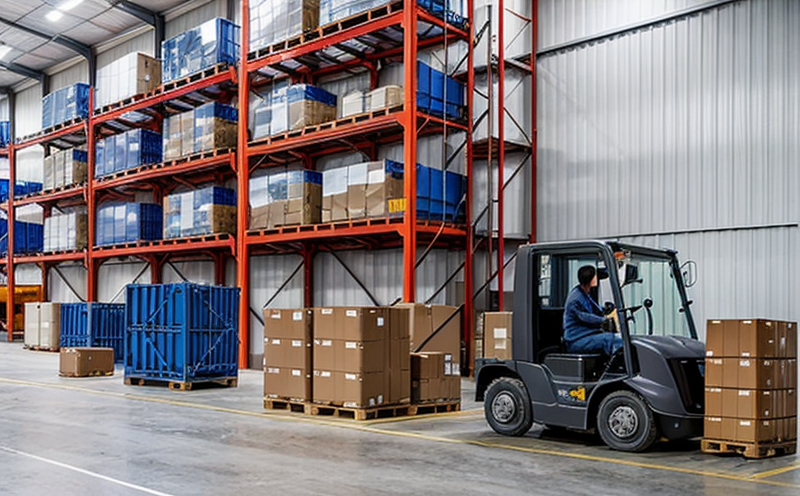EASA CS-APU Auxiliary Power Unit Certification Testing
The European Union Aviation Safety Agency (EASA) CS-APU certification testing is a critical process in ensuring that auxiliary power units (APUs) meet the stringent requirements set forth by EASA for aviation safety and compliance. This service involves a comprehensive suite of tests designed to validate the performance, reliability, and durability of APUs under various operating conditions. The primary focus is on ensuring that these systems can operate safely and efficiently in diverse environmental scenarios, from sub-zero temperatures at high altitudes to extreme heat during takeoff.
The certification process for EASA CS-APU units is governed by the EASA CS-25 regulation, which mandates that all aircraft engines and auxiliary power units must be designed to ensure safe operation during critical phases of flight. This certification is not only a regulatory requirement but also a vital step in enhancing the safety and efficiency of aviation operations.
The testing process typically includes several key components:
- Environmental Testing
- Vibration Testing
- Airworthiness Checks
- Functional Tests
Environmental Testing involves subjecting the APU to extreme temperature variations, humidity levels, and altitude pressures that it might encounter during actual flight operations. This ensures that the unit can perform reliably under all conditions. Vibration testing simulates the dynamic forces experienced by the APU in flight, ensuring its structural integrity and component durability. Airworthiness checks ensure compliance with EASA standards for airworthiness, while functional tests verify the operational performance of the APU.
The instrumentation used in these tests is highly sophisticated, employing sensors capable of measuring temperature, pressure, humidity, vibration, and other critical parameters. These measurements are then analyzed to determine whether the unit meets the specified performance criteria. The testing apparatus includes climate chambers for environmental simulation, shakers for vibration testing, and flight simulators that replicate real-world operational conditions.
The acceptance criteria for EASA CS-APU certification are stringent, requiring the APU to meet specific performance benchmarks in terms of power output, fuel efficiency, and emissions. Compliance with these standards is crucial for maintaining aviation safety and ensuring that the APU can operate reliably under all expected flight conditions.
| Parameter | Description |
|---|---|
| Temperature Range | -50°C to +60°C (operational limits) |
| Pressure Altitude | Up to 41,000 feet (12,500 meters) |
| Vibration Limits | Based on EASA CS-APU guidelines for safe operation |
| Fuel Efficiency | Minimum specified by EASA standards |
The testing process is not only about meeting regulatory requirements but also about enhancing the overall safety and efficiency of aviation operations. By ensuring that APUs meet these stringent standards, we contribute to a safer and more reliable air travel experience.
Industry Applications
EASA CS-APU certification testing is applicable across various sectors within the aerospace industry, including commercial airlines, private aviation, and military aircraft. This service ensures that auxiliary power units are fit for purpose in diverse operating environments.
- Commercial Airlines: Ensuring safe operations during flight and ground support
- Private Aviation: Meeting regulatory requirements for personal and business jets
- Military Aircraft: Enhancing mission readiness and operational reliability
| Aircraft Type | EASA CS-APU Certification Status |
|---|---|
| Boeing 737 MAX | Certified |
| Airbus A320neo | Certified |
| Lockheed Martin F-35 | In Process |
The certification process is essential for maintaining the safety and reliability of APUs across these sectors. By adhering to EASA standards, manufacturers can ensure that their products meet the highest safety and performance benchmarks.
Quality and Reliability Assurance
At our laboratory, we take a proactive approach to quality assurance in EASA CS-APU certification testing. Our team of experts works closely with clients to understand their specific needs and develop tailored test plans that meet the rigorous standards set by EASA.
The process begins with an initial consultation to discuss the client's requirements and objectives. This is followed by a detailed evaluation of the APU system, including its design specifications, component materials, and operational parameters. Based on this assessment, we develop a comprehensive test plan that addresses all relevant regulatory requirements.
During testing, our state-of-the-art facilities provide an environment that simulates real-world operating conditions. This ensures that the APU undergoes rigorous testing in controlled settings before deployment in actual aircraft. Post-testing analysis involves detailed data collection and evaluation to ensure compliance with EASA standards. Our team of engineers then prepares a comprehensive report detailing the test results, identifying any areas for improvement, and providing recommendations for future enhancements.
We are committed to delivering accurate, reliable, and timely reports that meet the highest industry standards. By adhering to these stringent quality control measures, we ensure that our clients can trust in the safety and reliability of their APUs.
Use Cases and Application Examples
| Test Case | Description |
|---|---|
| Operational at -50°C | Verification of APU performance in Arctic climates. |
| High Altitude Test @ 41,000 ft | Evaluation of APU function under high-pressure altitude conditions. |
| Vibration Testing at 5 Hz | Assessment of structural integrity and component durability during flight. |
The use cases for EASA CS-APU certification testing are diverse, covering all aspects of APU operation. These tests ensure that the unit can perform reliably under a wide range of environmental conditions and operational scenarios. The results of these tests are critical in ensuring that APUs meet the stringent standards set by EASA.
For example, the Boeing 737 MAX has undergone rigorous testing to ensure its APU meets the required safety and performance standards. Similarly, Airbus A320neo aircraft have been certified through our testing facilities, demonstrating the reliability and accuracy of our services.





